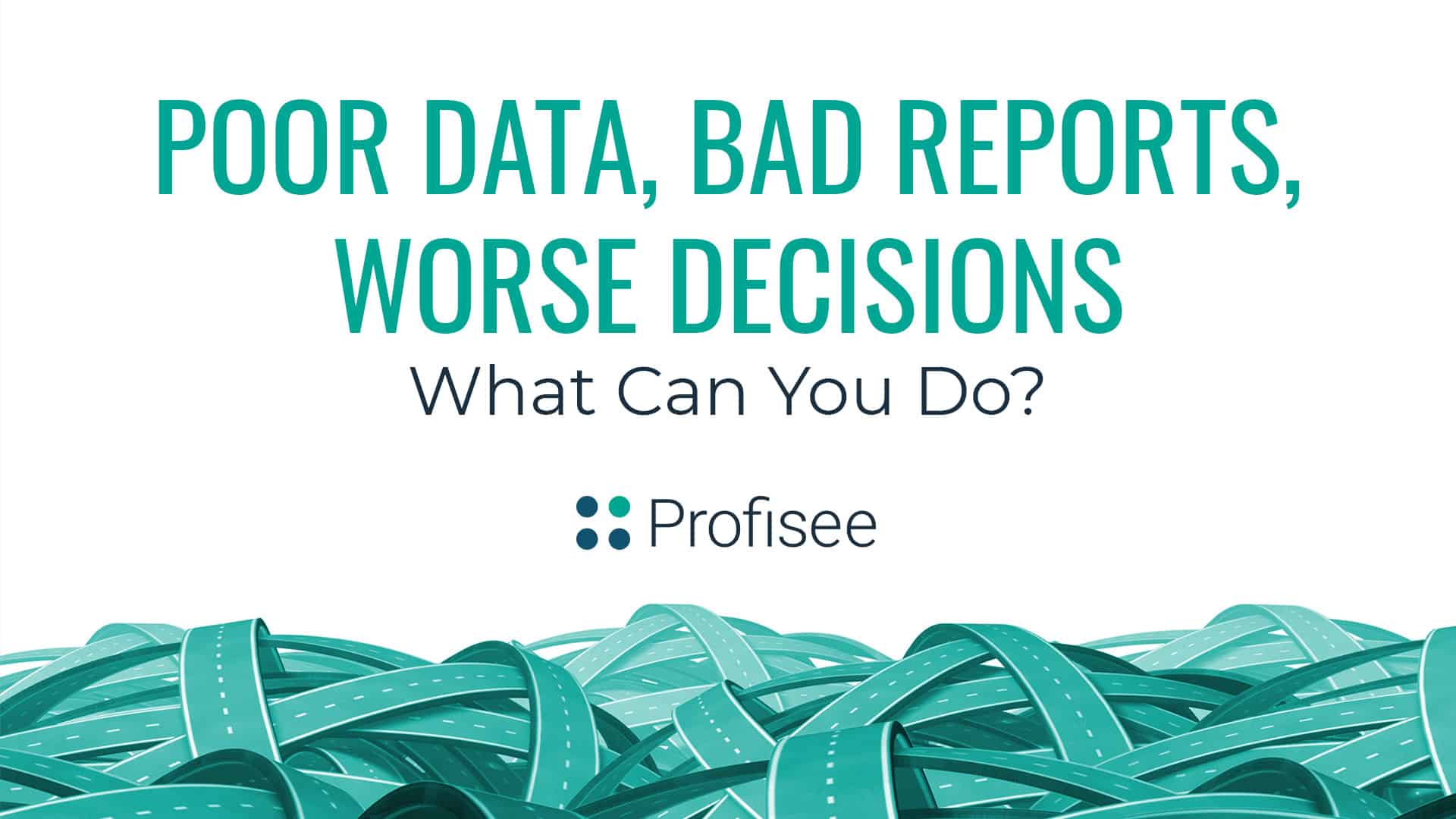As a data expert, you know that data quality means better decisions. Unfortunately, many data and business intelligence experts we talk to tell us that the C-suite doesn’t see the value in data governance.
It’s frustrating when you hear that your data concerns don’t matter compared to all of the other priorities in the organization. It doesn’t have to be that way. You can use this five-step data governance framework to earn management buy-in
for data governance.
1. Uncover The Problems Poor Data Is Currently Causing
Asking “please support my data governance program!” is the wrong approach entirely. It just comes across as technical jargon or worse, not particularly compelling. The solution is to look for problems inside your organization caused by poor data practices. To guide you through the process, use these prompts:
- Strategic Struggles: Where is your company struggling to execute? How does poor data contribute to that struggle?
- Productivity Problems: Where do bottlenecks slow down decision making for executives (e.g., creating financial reports and triple checking them for accuracy)? For example, Legrand North American, a manufacturer of electrical systems, consolidated 8 ERP systems and other data into a single solution. That saved them time and increased profits.
- Competitive Pressures: Are your competitors leveraging high-quality data to outcompete you in the marketplace? Remember, world class customer experiences like Amazon provides are run on robust data and analytics.
Make sure you have time for phone calls and in-person meetings because that work will help in the following steps.
Protip: Basing your data strategy around real problems is critical. For further exploration of this issue, check out our post “Where To Get Started with Your MDM Strategy.”
2. Frame Data Governance in Terms the Business Gets
If you use the phrase “data governance,” you will not get buy-in. Instead, frame BI as a solution to a painful problem like consistent customer fulfillment problems. Which framing for data governance works best? It depends. Here are two possibilities:
- Retail. “To increase customer satisfaction and repeat orders, we need to deliver every order on time using highly reliable data.”
- Finance. “Errors in our SEC reports are embarrassing for the company. High-quality data will prevent those errors.”
3. Paint a Picture of the Current State of Data Governance
Proclaiming weak data governance is not compelling. You need to paint a vivid picture using data and stories.
- Get the Data: Look at existing KPIs such as on-time deliveries and time required to approve new projects. Factor in the “all-in” costs of poor data management
in your research. - Get the Stories: Without stories, your efforts to get management buy-in for a BI expansion will not connect.
4. Find Your Fans: Data Governance Supporters
What happens when a BI manager seeks management buy-in alone? Most of the time, you will not get the approval you want. The answer comes down to pure office politics: you failed to line up supporters. To prevent this mistake from killing your BI program, get these supporters.
- Executive Support: Meet 1-on-1 with some of your executives who have a history of supporting innovation.
- Business Partner: They play the role of sharing direct stories about the high cost of poor quality data.
What if you struggle to line up any data governance supporters? Go back to step 1 to find more important business problems.
5. Get Outside Help: Build The Pitch For an External Solution
You know that your team just doesn’t have the tools to manage data right. Craft your pitch for an external solution by making it the centerpiece of a solution to a significant problem (e.g., customer fulfillment).
What If Your Management Still Says No To You?
If you were unsuccessful in winning management support, there
are two common reasons:
- “Other Priorities Are More Important Right Now.” This response means you did not find compelling problems. Go back to step 1.
- “Come Back With More Information.” This type of response means you have made it to the short list! Now, work with your supporters to find out how the final decision will be made.
Your Take Away Message
You’ve got to sell management on data governance by speaking their language. Do your homework to discover business problems and show how data governance solves the problem.
Protip: To learn more about strategies that can help you, check out the MDM Education Hub – and select the “Getting Started with MDM” link.

Forrest Brown
Forrest Brown is the Content Marketing Manager at Profisee and has been writing about B2B tech for eight years, spanning software categories like project management, enterprise resource planning (ERP) and now master data management (MDM). When he's not at work, Forrest enjoys playing music, writing and exploring the Atlanta food scene.











